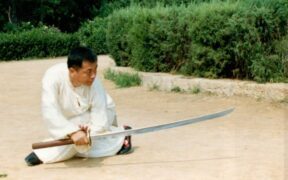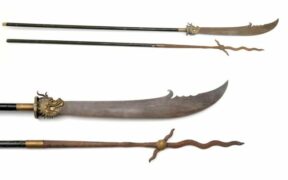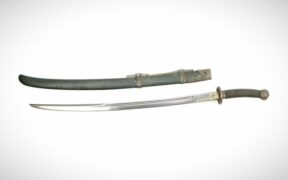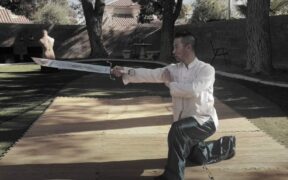Our content features commercial links to our products, committed to transparent, unbiased, and informed editorial recommendations. Learn More
Yanmaodao Sword Characteristics, Uses and History
NO AI USED This Article has been written and edited by our team with no help of the AI
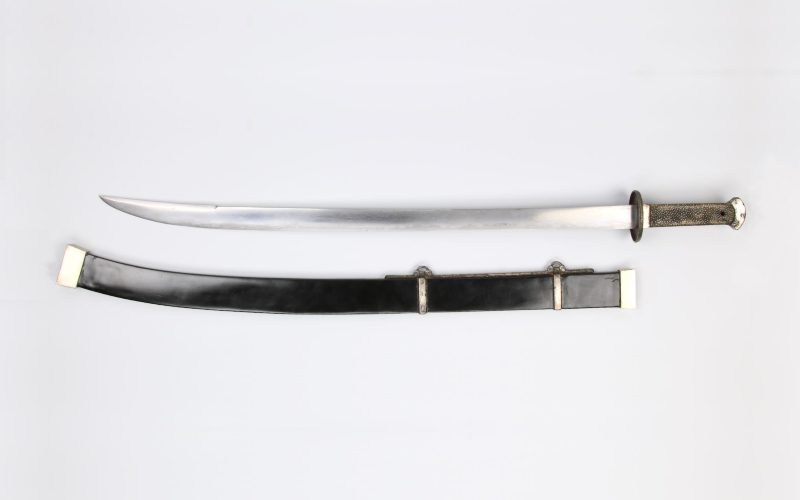
The Yanmaodao is a Chinese sword heavily used in the Qing and Ming dynasties. It is a mix of the straight Jian and the later curved Chinese swords.
This article will discuss the sword’s characteristics and how it was best used or can be used today. We’ll show you how to find the best Yanmaodao swords online and a few of our favorites. Then we’ll talk about its history and what it has in common with the Yanlingdao.
Characteristics of the Yanmaodao Sword

The physical traits of the Yanmaodao sword are easily recognizable by its short length (which some people might put in the short swords group) and the very soft and slight curve of the blade.
Size and Length
The Yanmaodao isn’t very long and is usually around 2.3 to 3.2 feet / 0.7 to 1 meter.
This makes it an ideal length for a starter weapon that will provide the ability to use it as a two-handed and one-handed sword.
It is a very good size and length, and its soft curve makes it very handy and easy to use.
Weight
The total weight of the Yanmadao is usually around 1.5 to 2.2 lbs / 0.7 to 1 kg.
It is a very light sword, primarily because of its size. This weight will allow the user to do all sorts of strikes and move freely without having to worry about tiring arms because of the weight.
Curvature

The curve is a very distinct feature of the Yanmaodao sword. As you can see, the sword is very straight, and the curve only starts toward the tip, or the last ¼ of the blade. This can be directly traced from the straight Jian while it is heavily influenced by the curve and effectiveness of the Turko-Mongol sabers.
Blade
The blade length is around 26 inches / 66 cm.
This Chinese sword has a straight blade with a very soft and unobtrusive curve. The biggest characteristic of the blade is that it curves only at the end or around the edge. The blade is usually made of steel or iron.
You might also notice that the blade of the Yanmaodao has a backbone. That is the line on top of the blade that makes it lighter and much easier to use. Most of the time, the spine of this sword has a raised profile.
Like Japanese swords, the blade is made of several layers. Between the layers of soft steel is a hard steel core that is more exposed at the cutting edge.
Guard
The guard of the Yanmaodao is usually circular but can also take the shape of traditional Chinese symbols like a dragon, cloud, tiger, bat, etc. The guard isn’t very big, yet it offers some protection to the user’s hand and fingers.
This Chinese sword often contains some kind of fitting or decoration around its guard. The tunkou – the decoration on top of the guard – can be anything from ming artwork to any type of Chinese symbol.
Handle
The standard handle length is 6.2 inches / 15 cm.
The handle of this Chinese saber is straight. The sword was heavily influenced by the Turkic curved handles and the Jian straight handles. That’s why the handle is partly straight and partly curved. Some Yanmaodao swords have a downward-positioned handle, which is more of a modern creation.
Scabbard
The Yanmaodao scabbard consists mainly of polished wood. It looks very similar to the Chinese scabbards for these slightly curved swords and is basically the same in shape or form.
The scabbard is slightly bigger than the blade and usually has a lot of fittings at the beginning (a very typical Chinese look). The beginning and end of the scabbard can have added metal material to enhance its appearance, making it heavier.
Uses of the Yanmaodao Sword

The Yanmaodao is best used when held in one hand. It is not a very long sword and has a slight curve at the end, allowing it to move quickly and precisely.
It has both the capabilities of slashing and thrusting. Its thrust can be deadly because the curve isn’t that strong at the end. However, professional sword users say slashing is the best way to use it.
The Yanmaodao was used both in the Chinese infantry and cavalry. Usually, the infantry would hold the sword in one hand and a shield in the other. The cavalry could also have used it with one hand while charging and slashing from the sides.
Martial Arts
These types of dao swords, which are slightly curved at the end of the blade, are heavily used in Chinese martial arts. The Yanmaodao might be the best example of them. It is used in Kung Fu, Tai Chi, and many other sword schools in China.
It isn’t a long sword and has a ¾ straight and ¼ curved blade. It can be used in various attacking and defending positions and ways, such as jumping, crouching, extending the arm to be longer, and so on.
Is it a Good Beginner Sword?
The Yanmaodao, which is both a straight and curved sword, is amazing in teaching a beginner to use two types of swords – the straight and curved ones. It is one of the starting weapons in Chinese martial arts, and we highly recommend it for beginners.
History of the Yanmaodao Sword
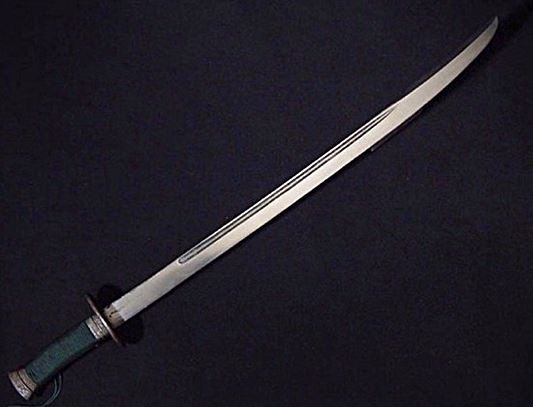
The Yanmaodao was one of the two main military swords of the Qing and Ming dynasties. It had a straighter blade than its brother, the Liuyedao. The Yanmaodao has a gentle curve that is usually only noticeable at the tip.
The Yanmaodao came about because the Chinese were influenced and then copied parts of the swords of their Turko-Mongol enemies. This was especially the case in the 13th century when the Yanmaodao was first created and became the standard Chinese military weapon.
Unlike the Liuyedao, which has a more curved shape, the Yanmaodao seems to have been influenced just as much by the earlier Jian, which has a straight edge. The Yanmaodao is straight enough to be used in Jian exercises and forms.
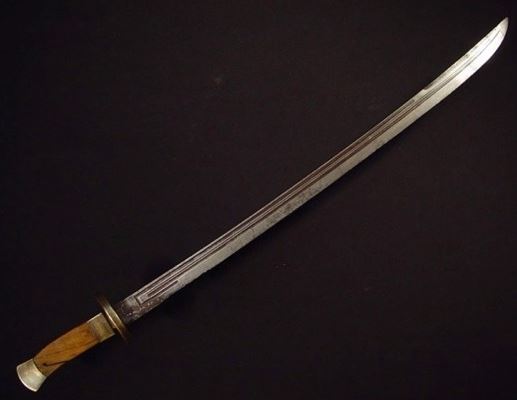
The Yanmaodao has been used in all sorts of combat. When China turned its focus to curved swords, numerous Yanmaodao swords were made, eventually replacing the Jian. The Yanmaodao has a very soft curve, and was replaced over time with stronger curved swords, such as the Liuyedao.
During the evolution and development of the Peidao, the Yanmaodao seemed to be the next step up from the Zhibeidao.
At the end of the Qing dynasty, the Yanmaodao sword slowly fell out of use and stopped being used altogether around the 18th century.
Terminology & Difference with the Yanlingdao

Yanmaodao means a goose quill saber, while the Yanlingdao translates to a goose feather saber.
The Yanmaodao is mostly a western term and cannot be found in any classical or historical Chinese texts. The real Chinese name for this sword is Yanlingdao. They have the same history and uses, but the Yanmaodao slightly differs in the curve and size since it is more of a modern creation.
The Yanmaodao is the modern term for the Yanlingdao, which can be found in classical texts. So if you are looking for a Yanmaodao sword online, consider a Yanlingdao since they are almost the same.
